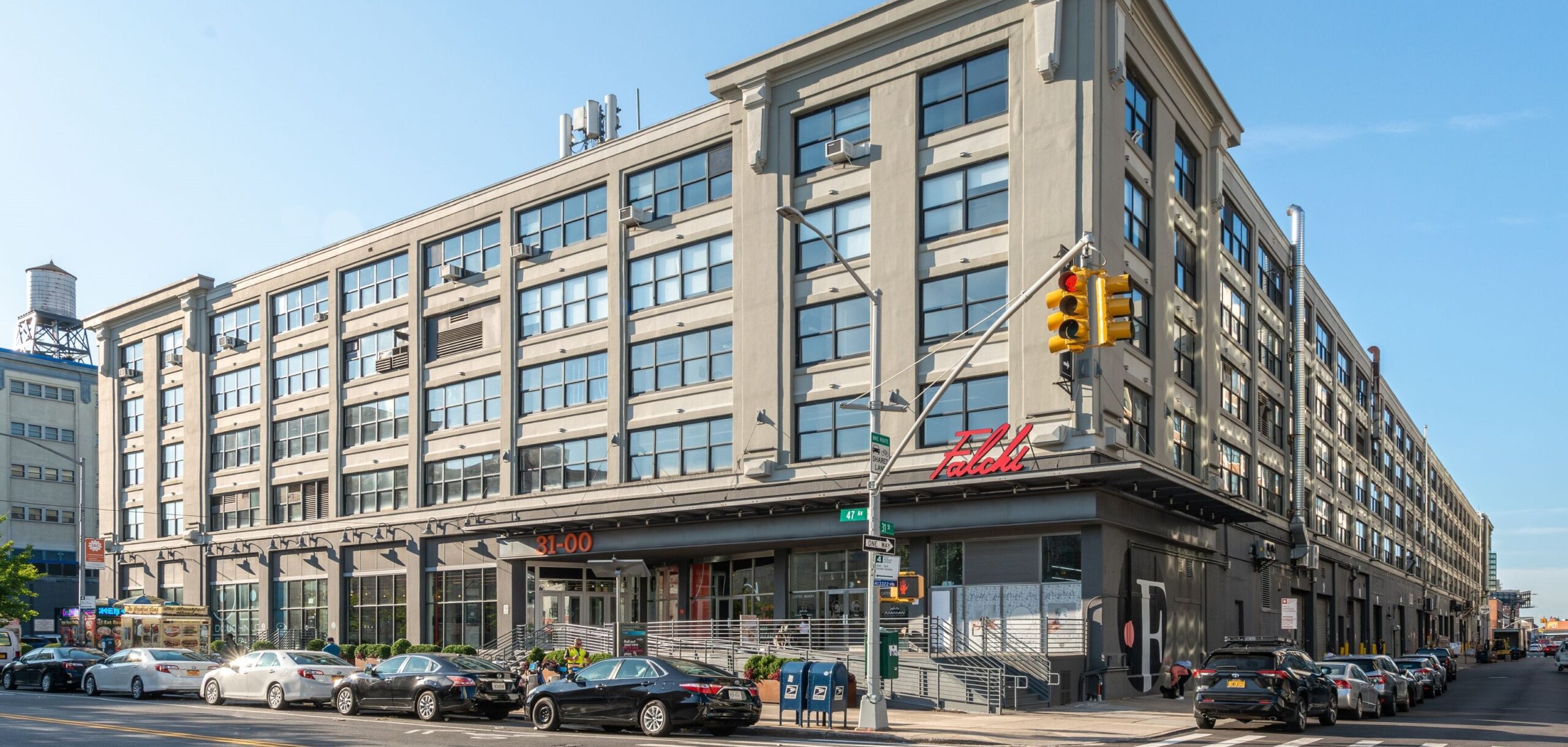The redevelopment of the Falchi Building in Long Island City during the 1990s marked a pivotal moment in the neighborhood’s transformation from an industrial hub to a mixed-use commercial and creative district. Originally constructed in the 1920s as a warehouse and distribution center for the Gimbels department store, the Falchi Building—named after its developer, Jerry Falchi—began its transition in the early 1990s when Falchi acquired the aging property. At the time, Long Island City was largely characterized by underutilized industrial properties, but its proximity to Manhattan and robust infrastructure made it a prime candidate for redevelopment. Linx Industries saw the building’s potential as a flexible commercial space and began converting the former warehouse into a business center tailored to creative industries, light manufacturing, and back-office operations. With over 600,000 square feet of space, the building was repositioned to attract a diverse mix of tenants, including artists, fashion designers, food production companies, and media firms. This adaptive reuse approach retained much of the building’s industrial charm—high ceilings, large floorplates, and robust freight capabilities—while introducing modern amenities.
Falchi Building

The redevelopment played a key role in reshaping the perception of Long Island City, helping to catalyze broader interest from investors and developers in the area. By the late 1990s and early 2000s, the Falchi Building had become a symbol of Long Island City’s commercial revitalization and set the stage for the neighborhood’s ongoing evolution into a dynamic urban district blending residential, retail, creative, and tech spaces.
The redevelopment of the Falchi Building in Long Island City during the 1990s marked a pivotal moment in the area’s evolution from a traditional industrial hub into a vibrant mixed-use commercial and creative district. Spearheaded by Linx Industries, the project became a catalyst for broader revitalization efforts across the neighborhood. Originally built in the 1920s as a warehouse and distribution center for the Gimbels department store, the Falchi Building had fallen into underuse by the early 1990s—reflecting a wider decline in industrial activity throughout Long Island City. Recognizing the property’s potential, Linx Industries acquired the building and launched an ambitious adaptive reuse initiative. With over 600,000 square feet of space, Linx reimagined the structure as a modern business center designed to accommodate creative industries, light manufacturing, and back-office operations. The redevelopment retained the building’s industrial character—including high ceilings, expansive floor plates, and substantial freight capabilities—while introducing upgrades to meet the demands of contemporary tenants. The repositioned Falchi Building quickly attracted a diverse mix of users, including artists, fashion designers, food production companies, and media firms. This influx of creative and entrepreneurial activity helped shift perceptions of Long Island City, signaling its emergence as an accessible and dynamic alternative to Manhattan. By the late 1990s, the Falchi Building stood as a symbol of Long Island City’s commercial renaissance. The success of the project underscored the impact of Linx Industries’ vision and contributed significantly to the area’s transformation into a thriving urban neighborhood characterized by a blend of residential, commercial, and creative spaces.
